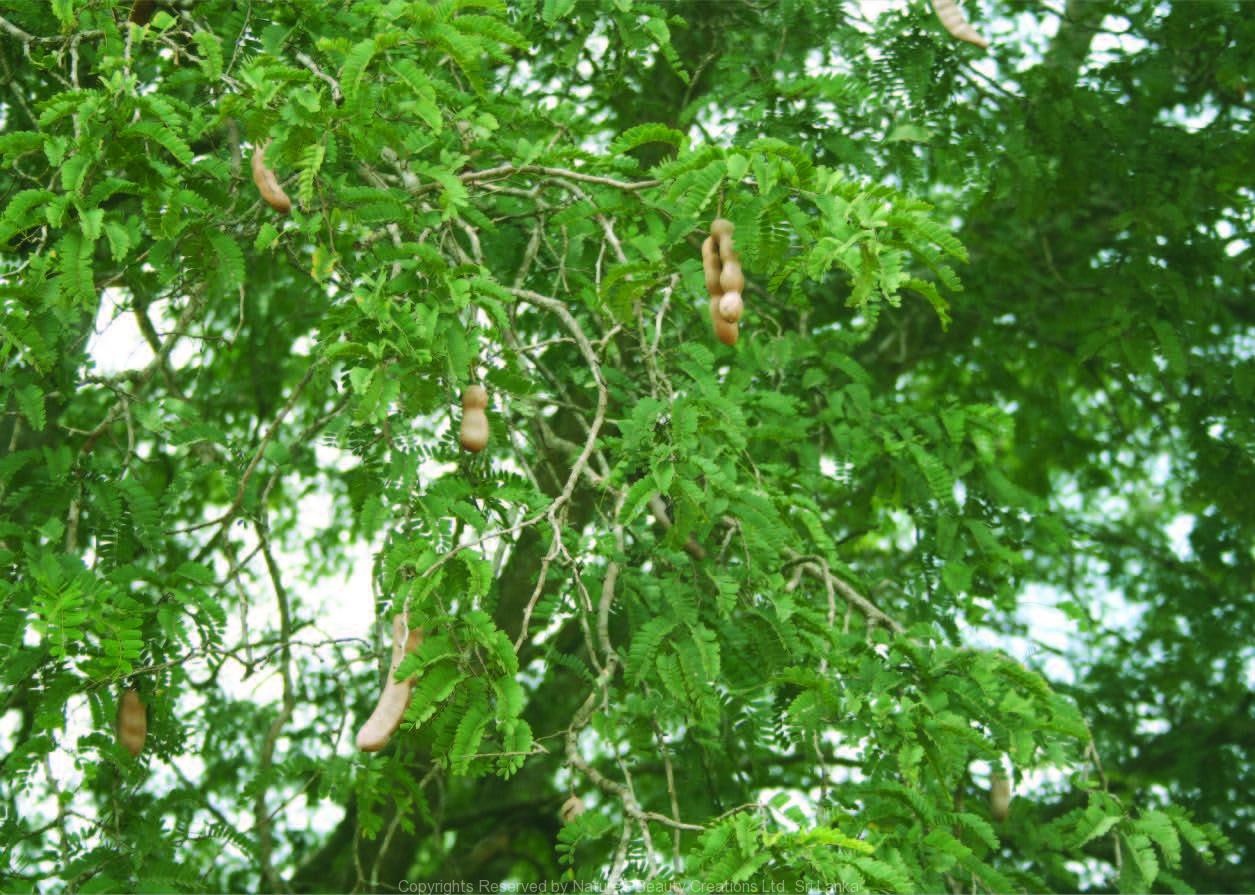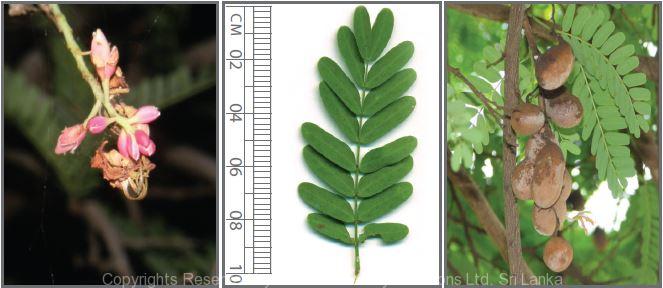

Traditional Knowledge
Useful plant parts :
Fruit pulp, leaf, flower, bark and seed
Uses in traditional medicine :
- Fruit pulp is mixed with traditional food to improve digestion
- Liniment prepared of the fruit pulp is applied on rheumatic joints
- Poultice prepared from leaves and flowers are applied on swollen joints
- Ground bark is applied around the eyes for eye inflammations
- Seed powder with bee honey is taken for chronic diarrhoea
- Pulp is given for fevers, bile disorders, alcoholic intoxication, restoration of sensation in cases of paralysis and inflammations
- Leaves and flowers are used to treat dysentery, jaundice, erysipelas and haemorrhoids
- Bark is an astringent, tonic and febrifuge and used in indigestion, colic, gingivitis and asthma
- Ground seeds are applied on boils
Scientific Research
Chemical constituents:
α-hydroxyl acids: tartaric, lactic, citric and malic acids from fruit pulp; fatty acids: linoleic, stearic, palmitic, oleic acids from seed oil; polysaccharide: xyloglucan from seeds; triterpenes: lupanone, lupeol from leaves
Bioactivity :
Aqueous extracts of seeds: wound healing, antidiabetic; alcohol extract of fruit: antioxidative, hypolipidaemic; seeds: contain serine proteinase inhibitor; methanol extract of leaves: antibacterial, which is the scientific basis for its use as a skin cleanser
Clinical:
References : Ajayi, I. A. et al., (2006), Oil content and fatty acid composition of some underutilized legumes from Nigeria, Food Chemistry, 99, 115–120. Caluwé, E. D. et al.,( 2010), Tamarindus indica L. – A review of traditional uses, phytochemistry and pharmacology, Afrika focus, 23(1), 53-83. Doughari, J. H., (2006), Antimicrobial Activity of Tamarindus indica Linn, Tropical Journal of Pharmaceutical Research, 5(2), 1-5. Fook, J. M. S. L. L. et al., (2005), A serine proteinase inhibitor isolated from Tamarindus indica seeds and its effects on the release of human neutrophil elastase, Life Sciences, 76, 2881–2891. Imam, S. et al., (2007), Two triterpenes lupanone and lupeol isolated and identified from Tamarindus indica linn, Pak J Pharm Sci, 20(2), 125-7. Khanzada, S. K. et al., (2008), Chemical constituents of Tamarindus indica L. medicinal plant in sindh, Pakistan Journal of Botany, 40(6), 2553-2559. Maiti, R. et al., (2004), Antidiabetic effect of aqueous extract of seed of Tamarindus indica in streptozotocin-induced diabetic rats, Journal of Ethnopharmacology, 92, 85–91. Martinello, F. et al., (2006), Hypolipemic and antioxidant activities from Tamarindus indica L. pulp fruit extract in hypercholesterolemic hamsters, Food and Chemical Toxicology, 44, 810–818. Melendez, P. A. and Caprile, V. A., (2006), Antibacterial properties of tropical plants from Puerto Rico, Phytomedicine, 13, 272–276. Mishra, A. and Malhotra, A. V., (2009), Tamarind xyloglucan: a polysaccharide with versatile application potential, Journal of Materials Chemistry, 19, 8528–8536. Mohamad, M. Y. B. et al., (2012), Tamarind Seed Extract Enhances Epidermal Wound Healing, International Journal of Biology, 4(1), 81-88.
Copyrights Reserved By
Natures Beauty Creations



